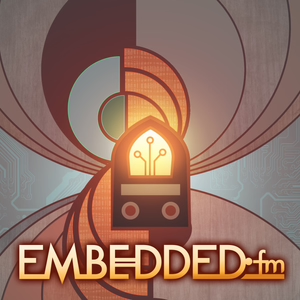
Embedded
Logical Elegance

2 Listeners
All episodes
Best episodes
Top 10 Embedded Episodes
Goodpods has curated a list of the 10 best Embedded episodes, ranked by the number of listens and likes each episode have garnered from our listeners. If you are listening to Embedded for the first time, there's no better place to start than with one of these standout episodes. If you are a fan of the show, vote for your favorite Embedded episode by adding your comments to the episode page.
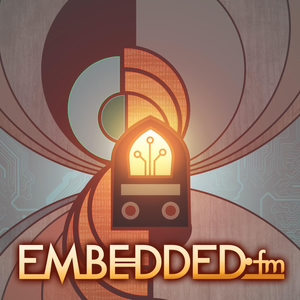
445: I Do Not Like Blinking
Embedded
03/16/23 • 71 min
We spoke with Charlyn Gonda about making things glow, dealing with imposter syndrome, and using origami.
Charlyn’s website is charlyn.codes, the projects we talked about are documented there. You can find her on Instagram (@chardane) and Mastodon (https://leds.social/@charlyn).
Adafruit came up a lot in this episode.
Jason Koon’s Fibonacci displays are mesmerizing. Check them out on Jason’s website www.evilgeniuslabs.org or acquire them on Tindie. It can be controlled with the Pixelblaze.
Sonobe modules in origami
1 Listener
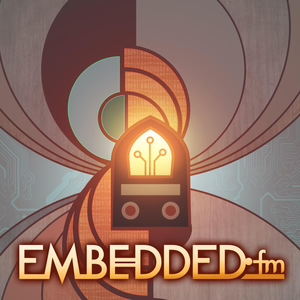
451: From Concept to Launch
Embedded
06/08/23 • 62 min
Phillip Johnston of Embedded Artistry, Tyler Hoffman of Memfault, and Elecia White discuss the software tasks that tend to fall through the cracks after the device has all its features but before it is in customers' hands. Noah Pendleton of Memfault was the moderator.
You can see the video on the Embedded YouTube channel or directly from memfault (also see their other panels and webinars).
Memfault’s Slack Channel and Interrupt Blog are both excellent resources for embedded information of all kinds.
1 Listener
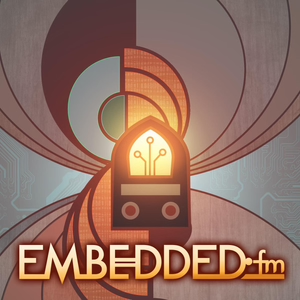
03/06/25 • 59 min
Professor Shimon Schocken spoke with us about teaching computer science from NAND logic gates to arithmetic units, micro assembly, virtual machines, compilers, operating systems, and the Tetris games. We also talk about good design, good interfaces, and good tests.
Shimon’s book is Elements of Computing Systems and the website with the course lecture notes, slides, videos, simulators, and everything you need is nand2tetris.org.
Shimon mentioned his work with teaching math, that is www.matific.com. You can find out more about Shimon’s other projects on his site shimonschocken.com (including his fascinating TED talk: The self-organizing computer course).
Shimon’s co-author is Noam Nisan who also wrote about understanding logic systems (look, anytime we can bring up Gödel's incompleteness theorems, we will).
We talked about Tim Bell’s CS Unplugged, teaching computer science concepts without a computer. It comes in Classic and Modern flavors.
Memfault is a leading embedded device observability platform that empowers teams to build better IoT products, faster. Its off-the-shelf solution is specifically designed for bandwidth-constrained devices, offering device performance and product analytics, debugging, and over-the-air capabilities. Trusted by leading brands such as Bose, Lyft, Logitech, Panasonic, and Augury, Memfault improves the reliability of devices across consumer electronics and mission-critical industries such as access control, point of sale, energy, and healthcare. To learn more, visit memfault.com.

1 Listener
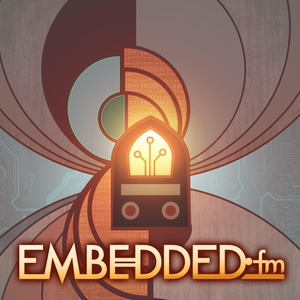
494: All Tech Is Wearable
Embedded
02/07/25 • 75 min
Debra Ansell joined us to talk about finding friends and exchanging neat gifts, accidentally tricking people into making unmanufacutable boards, and happy, blinking lights.
Debra is usually known by the moniker GeekMomProjects (also her website is geekmomprojects.com). She has been writing for Make Magazine.
Debra won one of the SuperCon badge add-on awards so her poseable Bendy SAO will be available at SuperCon Europe.
Some other things we mentioned:
- Seeed Studio XIAO board
- Adafruit QT Py
- Debra’s Remoticon talk about PCB structures
- Martin Oehler is Maketvee on YouTube and Mastodon
- Janet Hansen is on Mastodon and has an incredible Enlightened Designs wearables website.
- #makergiftexchange on your favorite social media platform
And some upcoming events that promise to have lots of LEDs:
- Teardown 2025 | Crowd Supply (Jun ‘25)
- Portland Winter Light Festival (Feb ‘25)
Memfault is a leading embedded device observability platform that empowers teams to build better IoT products, faster. Its off-the-shelf solution is specifically designed for bandwidth-constrained devices, offering device performance and product analytics, debugging, and over-the-air capabilities. Trusted by leading brands such as Bose, Lyft, Logitech, Panasonic, and Augury, Memfault improves the reliability of devices across consumer electronics and mission-critical industries such as access control, point of sale, energy, and healthcare. To learn more, visit memfault.com.
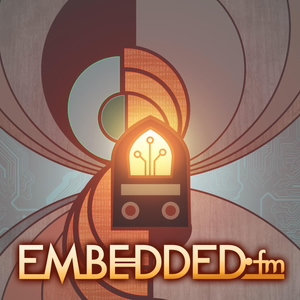
11/16/23 • 59 min
Chris and Elecia talk about their favorite processors, their breakfast preferences, large language model ethics, presents, and Eeyore's birthday.
Elecia’s new edition of her book Making Embedded Systems is finished! (Except for a couple months of tech reviews, updating, copyediting, and drawings.) It will be out in March.
All of the back issues of Byte Magazine
Chris’ radio kit that he mentioned but didn’t name is the QRP Labs QCX+ 5W CW Transceiver.
Nordic Semiconductor empowers wireless innovation, by providing hardware, software, tools and services that allow developers to create the IoT products of tomorrow. Learn more about Nordic Semiconductor at nordicsemi.com, check out the DevAcademy at academy.nordicsemi.com and interact with the Nordic Devzone community at devzone.nordicsemi.com.
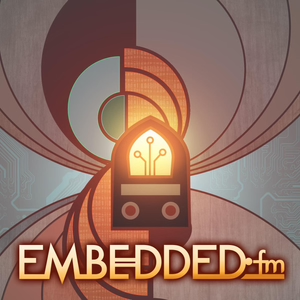
12/14/23 • 68 min
Ralph Hempel spoke with us about the development of Lego Mindstorms from hacking the initial interface to running Debian Linux as well as programming Mindstorms in Python. Happy 25th birthday to Lego Mindstorms!
Pybricks is a MicroPython based coding environment that works across all Lego PoweredUp hubs and on the latest Mindstorms elements. The creators are David Lechner and Laurens Valk.
Ralph was the first person to boot a full Debian Linux distro on the brick, see EV3Dev, a Debian Linux for Lego Mindstorms EV3.
BrickLink was originally a site for third party resellers of new and used Lego sets and elements. The site was purchased by the Lego Group a few years ago. It's still a great place to buy individual parts - for example a 4 port PoweredUp hub to run the new PyBricks on :-)
ReBrickable is a site dedicated to taking off-the-shelf Lego sets, and creating something new with the set. In particular see the MOCs Designed by LUCAMOCS, fantastic Technic vehicles as well as interesting designs for vehicle subsystems.
Yoshihito ISOGAWA - YouTube is an absolute genius at coming up with practical applications of new LEGO Elements. Ralph recommends his books as “awesome to read”.
LEGO uses 18 Cucumbers to build real Log House
Ralph highly recommends Test Driven Development for Embedded C by James Grenning (who has been on the show: 270: Broccoli is Good Too, 109: Resurrection of Extreme Programming, and 30: Eventually Lightning Strikes).
Origami Simulator and Elecia’s origami generating python code on github
Nordic Semiconductor empowers wireless innovation, by providing hardware, software, tools and services that allow developers to create the IoT products of tomorrow. Learn more about Nordic Semiconductor at nordicsemi.com, check out the DevAcademy at academy.nordicsemi.com and interact with the Nordic Devzone community at devzone.nordicsemi.com.
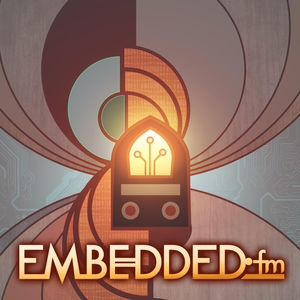
06/18/21 • 20 min
On this quick bonus episode, Elecia and Christopher chat about their various recent projects, some of which have just been released into the wild.
Christopher’s band 12AX7 just launched their album Kickstarter, which was selected as one of Kickstarter’s "Projects We Love”. Check it out here if you are interested in finding out more or backing it. It’ll run through July 16th at 10am Pacific Time.
Elecia’s Embedded Online Conference talk on map files will be posted publicly on June 22nd, so be on the lookout for that. In the meantime, the slides and examples are available here at embedded.fm/blog/MapFiles (and on Github)
If you’d like other Embedded merchandise such as a mug (many different options), Memory Map Land mousepad (or different poster), we have a Zazzle store.
Her lightning talk about origami, Snails, Paper, and Programming: A Computational Approach to Mollusc Morphology in Origami, is already on Youtube and you can watch it now! Elecia’s origami github can be found here.
Finally if you are interested in having your cat or cats appear in 12AX7’s upcoming music video, send Dropbox/Google Drive/iCloud/whatever links to your clips, along with how you’d like to be credited, to [email protected]. Use the subject line “Cats for 12AX7”.
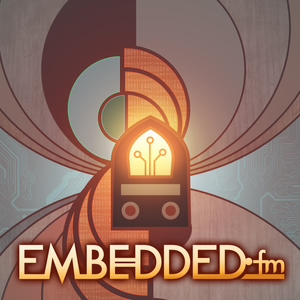
99: You Can Say a Boat (Repeat)
Embedded
02/02/17 • 83 min
While we planned to ask Andrei Chichak to podcast when he was in town for the Embedded.fm party, we spent too much time goofing off. So we are replaying Andrei's first appearance on the show where he spoke with us about MISRA-C and ethics. (Note that this is the same Andrei who writes the STM32 Embedded Wednesday posts for the Embedded.fm blog.)
Linker post: It's dangerous to go alone! Take MISRA-C
Andrei's has personal website (we failed to talk about his kite aerial photography, it is really neat though) and his company is CBF Systems.
Plum Hall C Compiler Validation
JPL Coding Standards for C (and the mentioned video discussing Mars Code)
ISO 26262 Automobile software standard
Cortex-R for high reliability systems (ARM's description)
National Society of Professional Engineers code of ethics and Canadian Engineering Guidelines on the Code of Ethics
Offline, Andrei recommended two books and another podcast about MISRA:
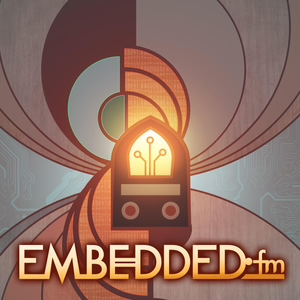
10/19/23 • 75 min
Marian Petre spoke to us about her research on how to make software developers better at developing software.
Marian is an Emeritus Professor of the School of Computing & Communications at the Open University in the United Kingdom. She also has a Wikipedia page.
The short version of How Expert Programmers Think About Errors is on the NeverWorkInTheory.org page along with other talks about academic studies on software development topics.
The longer version is a keynote from Strange Loop 2022: "Expert Software Developers' Approach to Error".
This concept as well as many others are summarized in Software Design Decoded: 66 Ways Experts Think (Mit Press) by Marian Petre and Andre van der Hoek (MIT Press, 2016). The book’s website provides an annotated bibliography. Marian has also co-written Software Designers in Action: A Human-Centric Look at Design Work.
She is current conducting inquiries into:
- Code dreams: This research studies whether software developers dream about coding – and, if so, the nature of those dreams. Following on from work on software developers’ mental imagery and cognitive processes during programming, this project investigates developers’ experience of coding in their dreams (whatever form that takes), and whether the content of such dreams provides insight into the developers’ design and problem solving.
- Invisible work that adds value to software development: The notion of ‘invisible work’ – activity that adds value in software development but is often overlooked or undervalued by management and promotion processes – arose repeatedly in discussions at Strange Loop 2022. Developers asked for evidence they could use to fuel conversations -- and potentially promote change -- in their organisations. This research aims to capture the main categories of ‘invisible work’ identified by developers (e.g., reducing technical debt; improving efficiency; addressing security; development of tools and resources; design discussions; ...), and to gather concrete examples of the value that work adds to software.
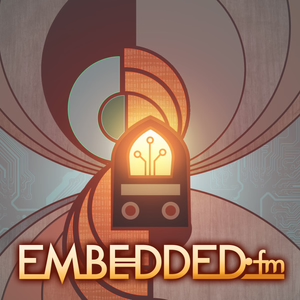
366: All the Wrong Tools
Embedded
03/18/21 • 59 min
Laurel Cummings (@justblamelaurel) teaches people how to build what is required with the material on hand. We talked with her about how to engineer survival solutions on-the-fly, often while performing disaster relief. Also: what could be made with chewing gum and paper clips.
Laurel works at Building Momentum (buildmo.com). They are currently hiring.
Laurel spoke at SuperCon 2019 about Austere Engineering.
Show more best episodes

Show more best episodes
FAQ
How many episodes does Embedded have?
Embedded currently has 549 episodes available.
What topics does Embedded cover?
The podcast is about Software, Podcasts, Technology, Science and Engineering.
What is the most popular episode on Embedded?
The episode title '445: I Do Not Like Blinking' is the most popular.
What is the average episode length on Embedded?
The average episode length on Embedded is 66 minutes.
How often are episodes of Embedded released?
Episodes of Embedded are typically released every 7 days.
When was the first episode of Embedded?
The first episode of Embedded was released on May 16, 2013.
Show more FAQ

Show more FAQ